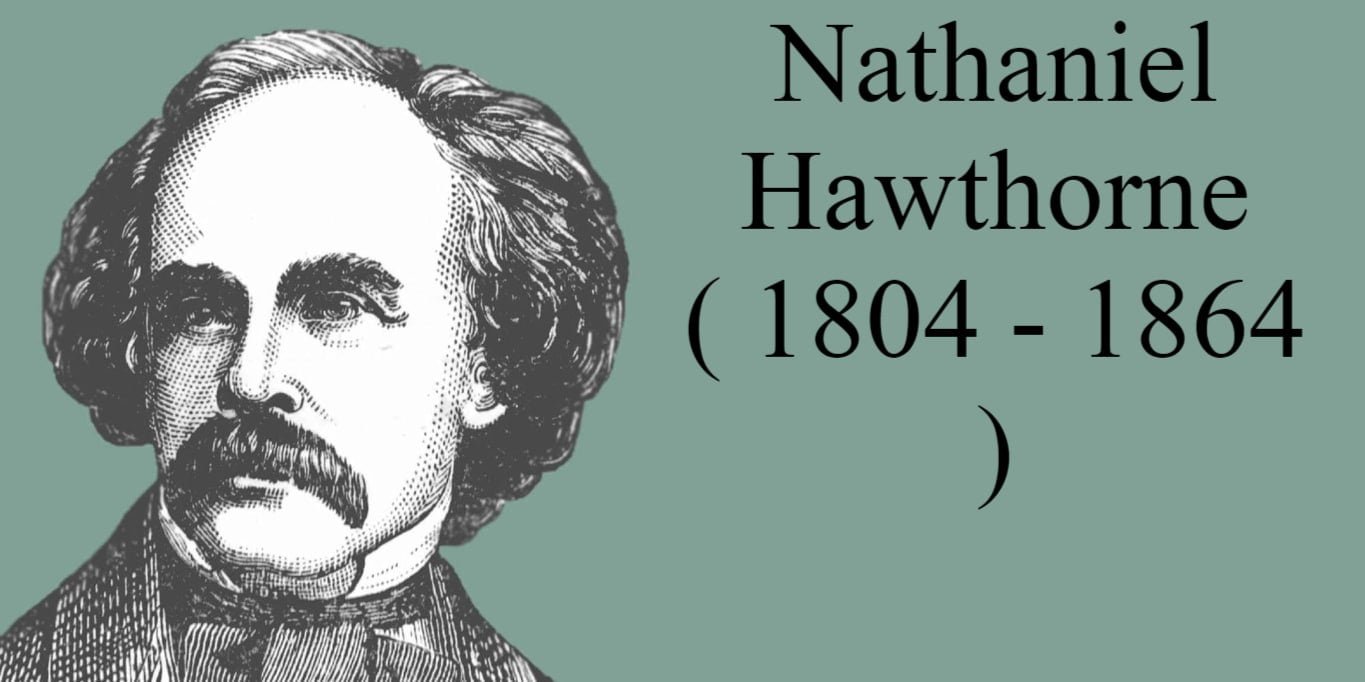Nathaniel Hawthorne was born on July 4, 1804 in Salem, Massachusetts. His birthplace is preserved and open to the public.
His short stories include “My Kinsman, Major Molineux” (1832), “Roger Malvin’s Burial” (1832), “Young Goodman Brown” (1835) and the collection Twice-Told Tales. One of the greatest fiction writers in American literature, he is best known for The Scarlet Letter (1850) and The House of the Seven Gables (1851).

William Hathorne was the great-great-grandfather of the author. He was England’s first family to settle in Dorchester, Massachusetts before moving to Salem. There he became an important member of the Massachusetts Bay Colony and held several political positions, including magistrates and judges, becoming notorious for his harsh punishment. William’s son and writer’s great-grandfather John Hathorne was one of the judges.
Early Life
Hawthorne later added a “w” to his name to distance himself from this side of the family. Hawthorn’s father Nathaniel Hathorne was a sea captain who died of yellow fever in Suriname in 1808. He was a member of the East India Marine Society.
After his death, his widow moved with young Nathaniel and two daughters to relatives in Mannings in Salem, where they lived for 10 years. The young Hawthorne was hit in the leg on November 10, 1813, playing “bat and ball”, and he went limp and bedrest for a year, although many physicians found nothing wrong with him.
College Life
While attending college, Nathaniel Hawthorne missed his mother and two sisters very much and after graduation, returned home for a 12-year stay. During this time, he began writing with purpose and soon his “voice” received self-publishing of several stories.
By 1832, he wrote “My Kinsman, Major Molinux” and “Roger Malvin Burley” two of his greatest stories, and in 1837, “Twice Tell Tales“. Although his writings brought him some notables, it did not provide a dependable income and for a time he worked at the Boston Custom House for the weighing and scaffolding of salt and coal.
Marriage
By 1842, however, Hawthorne’s writing had brought him a sufficient income to allow him to marry Sophia yet his books were far from profitable enough to support a wife and family, so in 1838 he went to work in the Boston Custom House and then spent part of 1841 in the famous Brook Farm community in hopes of finding a pleasant and economical home for Sophia and himself.
The Hawthornes had three children. Their first was daughter Una, born March 3, 1844 and in 1846, their son Julian was born. Daughter Rose was born in May 1851, and Hawthorne called her his “autumnal flower”.
Writing the novels
Facing the world once more, Hawthorne obtained in 1846 the position of surveyor (one who maps out new lands) in the Salem Custom House, but was relieved of this position in 1848 because of his political ties. His dismissal, however, turned out to be a blessing, since it gave him time in which to write his greatest success, The Scarlet Letter.
The period 1850 to 1853 was Hawthorne’s most productive, as he wrote The House of the Seven Gables and The Blithedale Romance, along with A Wonder Book (1852) and Tanglewood Tales (1853). During 1850 the Hawthornes lived at the Red House in Lenox in the Berkshire Hills, and Hawthorne formed a memorable friendship with novelist Herman Melville (1819–1912). The association was more important to Melville than to Hawthorne, since Melville was fifteen years younger and the much more impressionable (easily influenced) of the two men. It left its mark in dedication of his Moby-Dick, and in some wonderful letters.
Years abroad
In 1852 Franklin Pierce was elected president of the United States, and Hawthorne, who wrote his campaign biography, was appointed to the important overseas post of American consul (advisor) at Liverpool, England. He served in this post from 1853 to 1857. These English years resulted in Our Old Home (1863), a volume drawn from the since-published “English Note-Books.”
In 1857 the Hawthornes left England for Italy, where they spent their time primarily in Rome and Florence. They returned to England, where Hawthorne finished his last and longest complete novel, The Marble Faun (1860). They finally returned to the United States, after an absence of seven years, and took up residence in their first permanent home, The Wayside, at Concord.
Nathaniel Hawthorne Poems List
Last years
Although he had always been an exceptionally active man, Hawthorne’s health began to fail him. Since he refused to submit to any thorough medical examination, the details of his declining health remain mysterious. Hawthorne died on May 19, 1864. He had set off for the New Hampshire hills with Franklin Pierce, an activity he had always enjoyed, hoping to regain his health. But he died the second night in Plymouth, New Hampshire, presumably in his sleep.
Hawthorne once said that New England was enough to fill his heart, yet he sought the broader experience of Europe. Modest in expectations, he had nonetheless desired to live fully. Hawthorne’s life and writings present a complex puzzle. A born writer, he suffered the difficulties of his profession in early-nineteenth-century America, an environment unfriendly to artists.



Thanks for providing this.